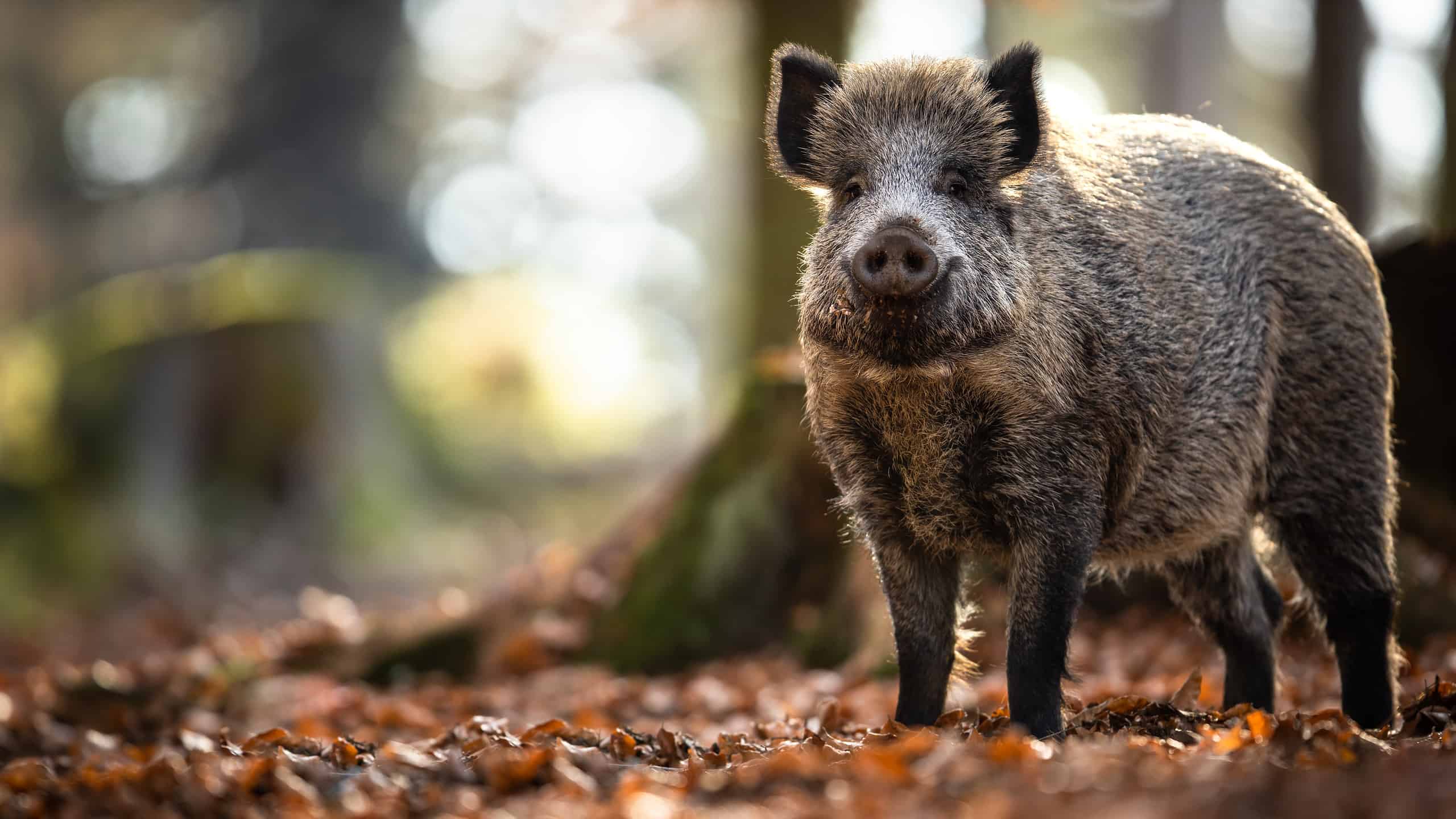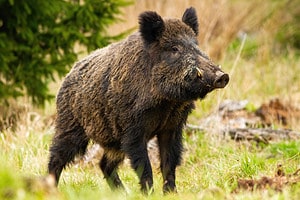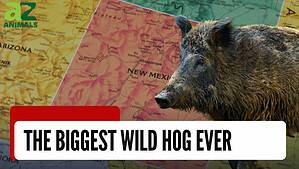Also known as the “The Volunteer State,” Tennessee proudly hosts nearly 80 animal species, including natives like cougars, black bears, coyotes, gray foxes, bobcats, and deer. Some of these are known for their incredible speeds, which are handy when hunting for food and escaping predators.
However, other animals in Tennessee provenance are famed for their intrusive nature. A good example is the wild boar (Sus scrofa), which you might know as the feral swine, wild hog, or wild pig. So destructive is this species that the Tennessee Wildlife Resource Agency (TWRA) has resolved to leverage modern technology to trap them, controlling their population and keeping them out of Tennesseans’ properties.
But exactly how many wild hogs call Tennessee home? Below, we’ll discuss the feral swine population in this landlocked state. You’ll also find valuable information about how to make the most of hunting these animals, whether you’re a seasoned hunter or a newbie. Let’s start by looking into the history of wild pigs in The Volunteer State.
History of Wild Boars in Tennessee
Wild hogs have roamed Tennessee since the early 20th century when some residents first imported them. At the time, they were only a few distributed across about 15 counties. Even so, their population exploded quickly because the species reproduced as often as rats, with sows producing 10-20 offspring annually for up to 14 years in a row.
Soon enough, 80 out of the 95 counties in Tennessee had wild boars wreaking havoc on Tennesseans’ land. The property owners complained because these animals invaded their farms and rooted so hard that planted fields looked freshly plowed. In 1999, the TWRA eventually gave citizens the green light to hunt down wild pigs to combat their overpopulation.
Did Hunting Solve the Wild Hog Problem?
Unfortunately, the TWRA’s move to reduce the rapidly increasing wild hog population through statewide hunting didn’t yield the desired results. Hunters only transported the animals to their lands to make trapping them easier. Therefore, they continued reproducing and became an even bigger menace for landowners.
Given their large populations, even the TWRA couldn’t successfully hunt the wild boars. These animals are social and enjoy moving in family groups/sounders. Shooting one or two only dispersed the others, prompting them to run to neighboring properties.
How TWRA Controls Wild Boar Population
The specific number of wild boars in Tennessee remains unknown. But it’s, without doubt, high because the animals are in more than 80 counties in the state and are already on the list of the most destructive species.
The TWRA now manages Tennessee’s large feral swine population by using traps with cameras and sensors to trap the pigs. This allows them to monitor the devices and trigger their doors remotely to ensure they catch all the animals before they escape.
What Feral Pigs Look Like
Are you looking forward to trapping wild boars when the hunting season arrives? Learning to distinguish these animals from domestic hogs is critical, especially if you’ve just entered the scene. Thankfully, it’s a piece of cake once you know their appearance.
Typically, wild boars are thinner than the pigs we keep at home. Their hides are also thicker, with pricklier hair and longer tusks protruding from their lower jaws. Thanks to decades of extensive cross-breeding, their coat color patterns are diverse, often swaying from whites and blacks to rusty browns and reds. The piglets have multiple patches that tend to fade as they age.
Here are more physical characteristics to look out for when hunting wild boars in Tennessee:
- Short but robust trunks
- Large heads with powerful head muscles
- Cloven hooves with blunt-tipped toes
- Males are larger than sows
- Tiny, deep-set eyes
- Large and long ears
- Fully-developed canine teeth
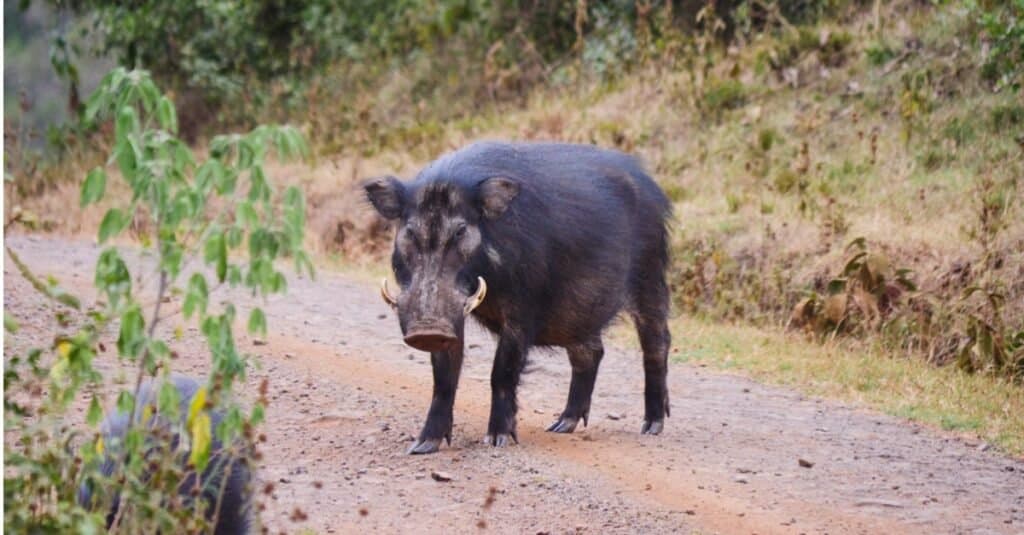
A wild boar forages for food in its natural habitat, its stocky body covered in coarse hair and long curved tusks.
©iStock.com/chingkai huang
Signs of Wild Boar Presence
If you plan to hunt wild hogs, knowing their physical characteristics is not enough. You must also master the tell-tale signs of their activity on your property – or any other – because their nocturnal nature deters you from spotting them during the day. These include:
- Considerable rooting as they look for food
- Large, round hoof tracks in wet areas, streams, and ponds
- Extensive crop damage
- Wallows in moist regions, even during warmer months
- Many trails leading to dense vegetative cover
- Droppings or scat with partly digested remnants of food, such as grains and feathers of birds they’ve eaten
- Post and tree rubs, which mostly happen after wallowing
Hunting Wild Boars in Tennessee
In Tennessee, wild hogs are categorized as destructive species. While owning, moving, or releasing these non-native animals is unlawful, you can legally hunt them down. Here are six compelling reasons trapping and shooting feral swine is a great idea.
They Damage Property
The fact that wild boars have a knack for destroying nearly everything they come across should be enough to convince you to hunt them. These animals cause damage worth roughly $1.5 billion annually in the United States. Their capability to wreck animal habitats and ruin crops is mind-blowing, a problem worsened by their proficiency at reproducing.
Undoubtedly, hunting wild hogs is a surefire way to minimize the damage they cause and protect property owners against unimaginable losses. It’s also an excellent strategy to preserve other animal species living in Tennessee since they don’t have to suffer the consequences of habitat loss.
They Present Many Hunting Opportunities
Another valid reason to trap and kill wild boars is they offer numerous hunting opportunities, especially for enthused hunters. You’ll find thousands of these animals across the state and you can shoot as many of them as possible anytime during the day (on your land).
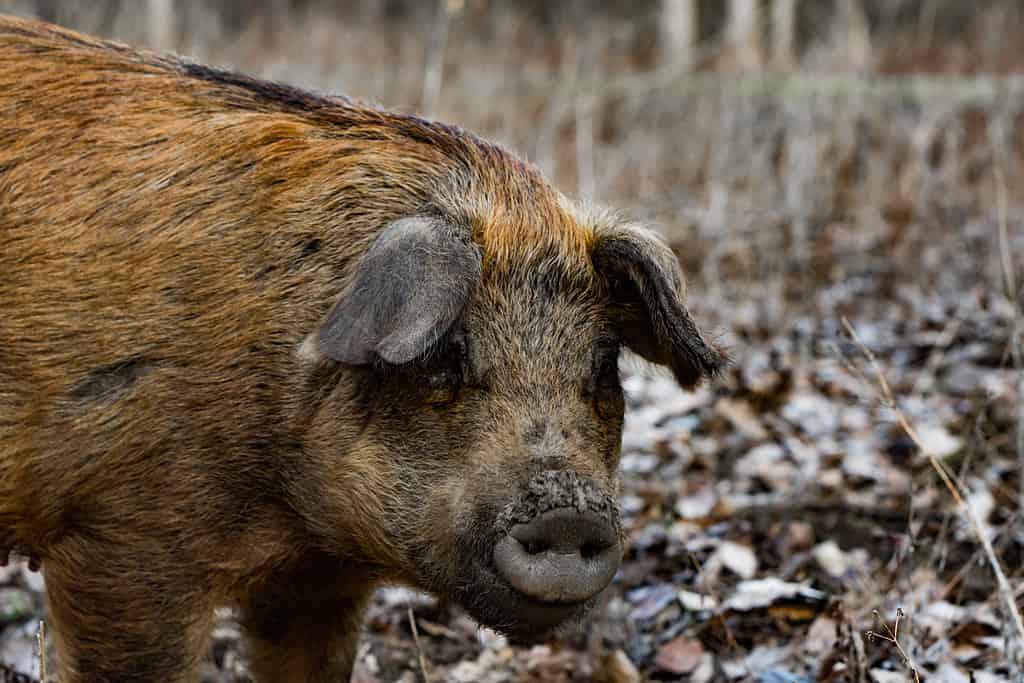
This impressive wild boar stands proud, surveying its domain. A majestic creature of nature, it’s both awe-inspiring and intimidating to behold.
©Marko25/Shutterstock.com
They Carry Diseases
In addition, you should hunt wild boars because they’re pathogen carriers that pose a massive threat to animals and humans. For starters, they harbor up to forty parasites that can be transmitted to pets, people, and wildlife, including lice, ticks, and fleas. Furthermore, the species are known causes of more than 30 bacterial and viral diseases, such as:
- Swine influenza
- Brucellosis
- Salmonella
- Hepatitis
- Tularemia
- Leptospirosis
- Pathogenic Escherichia coli
- Trichinellosis
- Toxoplasmosis
Essentially, hunting wild boars saves lives that the infections the animals spread could otherwise claim. Notably, these pigs pass on the pathogens through direct contact with them or their scat. Sharing watering or feeding containers with feral swine and eating their raw meat also transmits the diseases.
Signs of Wild Hog Illnesses
You might have a wild boar-caused infection if you exhibit the following symptoms:
- Lethargy
- Swollen joints
- Respiratory complications
- Reproductive problems
- Fever
Sad to say, an infected person or animal can easily transmit the pathogens to others, begging the need to be cautious around them. If you’re the patient, seek medical attention immediately and avoid direct contact with your loved ones, including pets.
They Cause Fatal Collisions
Car, train and aircraft accidents involving wild boars aren’t unheard of in Tennessee and other parts of the US. Some of these animals are unusually large and weigh up to 500+ pounds. Moreover, they boast a considerably low center of gravity. This means their bodies are more stable, increasing their chances of causing collisions, especially when they cross highways or move in large numbers.

Wild boars can cause serious damage to property and pose a danger to passers-by.
©Martin Mecnarowski/Shutterstock.com
They Prevent Humans from Having Fun
At first glance, wild boars are shy. But they’re short-tempered, and their behavior is unpredictable. More often than not, they attack hikers, golfers, and picnickers, mainly because they associate humans with food. This makes it unsafe to explore territories known to harbor feral swine.
If you encounter wild boars outdoors, it’s best to cut your adventure short by moving to another location, although they will likely only attack you if you threaten them or their young.
Hunting Controls Wild Boar Population
There’s little you can do to stop wild boars from breeding, meaning their population will increase as years go by. Nevertheless, you can reduce the number of these animals in Tennessee or any other state by shooting them down. This also prevents them from overpopulating their habitats, avoiding the following issues:
- Water and food shortage for the species
- Spread of diseases such as swine influenza
- Excessive destruction of property
- Over-taxing of the available natural resources
- Starvation and famine as these animals destroy agricultural produce
Wild Hog Hunting Regulations
Before shooting these animals, you must familiarize yourself with Tennessee’s wild boar hunting rules to avoid squabbles with the authorities. If you’re a private property owner, the law permits you to:
- Shoot an unlimited number of wild hogs during the day, all year round, with any gun allowed for hunting small and big game.
- Contact the regional TWRA office for assistance shooting wild boars on your property.
- Hunt the animals using live traps with bait, even if it’s not during the big game season.
- Get a private landowner wild boar exemption from the TWRA regional office to allow you to hunt with family members and tenants at night using dogs and artificial lights.
- Kills wild hogs during the bear dog hunt if you’re licensed to hunt bears.
Hunting Wild Hogs on Public Land
The Tennessean law also allows you to kill wild boars on designated public land using specific control methods, depending on your chosen area. For example, Region 1 covers the land around Meemen-Shelby State Park and Big Hill Pond State Park (the part south of the railroad tracks). You can hunt feral pigs here during the deer hunting season if you possess a valid license to kill the hoofed ruminants.
Region 3 comprises the area around Cumberland Plateau, specifically the following parts:
- Tellico Lake WMA
- Standing Stone State Forest
- Bridgestone-Firestone WMA
- Alpine Mountain WMA
- Skinner Mountain
On the Big South Fork (regions 3 and 4), you can take wild hogs with a special permit during the deer season and the small game season between January and February. On top of that, you’re free to explore these areas as a feral pig hunter:
- North Cherokee WMA – If you’re a licensed big game hunter during the big game hunt.
- Foothills WMA and North Cumberland WMA – If you’re a licensed hunter during small and big game hunts.
- Kyker Bottoms WMA – If you’re a licensed big game hunter during turkey or deer hunts.
Five Tips for Passionate Wild Boar Hunters
Now that you know why hunting wild boars is essential and the rules governing this activity in Tennessee, it’s time to prepare for trapping these animals. What should you do to improve your chances of success? Use these valuable tricks:
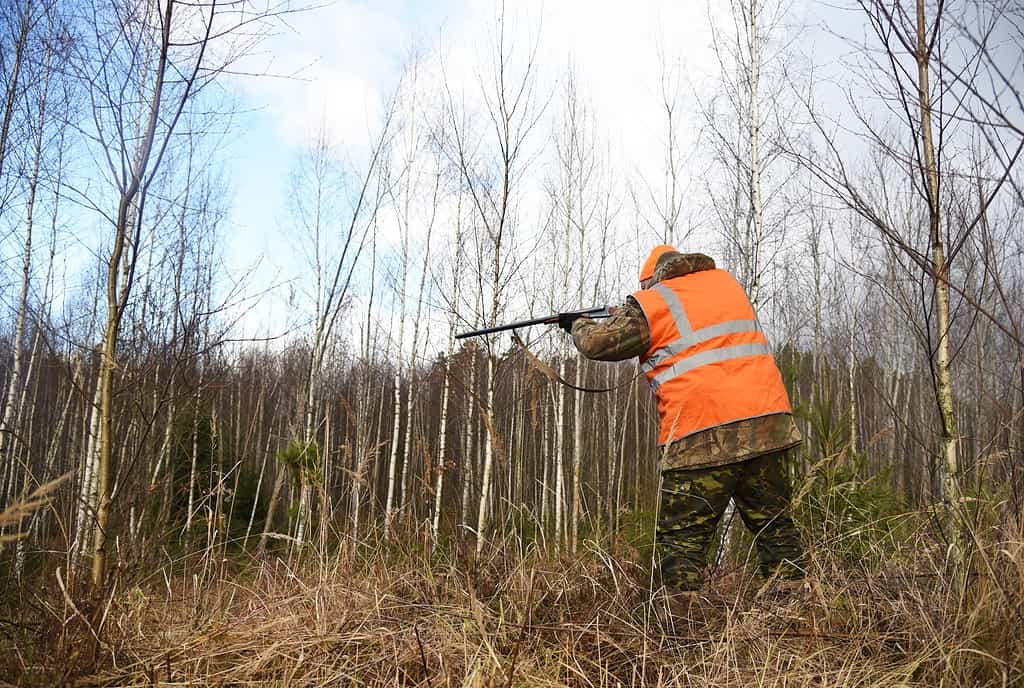
This hunter is ready to take on the challenge of tracking down these wild animals in their natural habitat.
©Maksim Safaniuk/Shutterstock.com
Monitor Wild Hogs
When you suspect wild boars frequent your property, use a trail camera to monitor them. This lets you know when and how often they visit your land and their number. With such handy information, you can set your traps – strategically distributing them across the field – and wait for the animals to stop by again.
Hunt at Night
Wild boars are nocturnal creatures typically active at night when they leave their habitats to scour landowners’ properties for food. This is the best time to hunt them. However, if you want to avoid stepping outside at dusk, catch the pigs at dawn, though you might not find many. Also, before you do that, explore every part of the hunting location for your safety.
Stay Still
Because wild boars have excellent hearing, always be quiet when hunting the species. Beware that even the faintest sounds, such as the “atchoo” we make after sneezing, can alert these aggressive animals and prompt them to disperse before you catch them. They boast high speeds of up to 25 mph, so best believe they’ll easily escape your trap sooner than you think.
Use Wild Boars’ Weaknesses Against Them
With their hostility, fast speeds, nocturnal nature, extraordinary hearing, and strong sense of smell, wild hogs aren’t the easiest game to hunt. But this doesn’t mean you can’t have the edge over them on the field — the key lies in taking advantage of their flaws when hunting them. To begin with, these animals are usually loud and make distinctive squealing and grunting sounds when mating and feeding, ultimately betraying their locations.
Further, wild hogs have an insatiable hunger, which drives them to ‘pig out’ whenever the opportunity presents itself. You’ll have them on your trail with food options such as nuts, acorns, fruits, and even homemade meals. Since they’re also repetitive creatures, they’ll likely come back to you time and again, offering you plenty of chances to shoot them.
Get the Right Rifle and Ammunition
Contrary to popular belief, you shouldn’t hunt wild boars with any firearm — use one specifically designed for hunting the pigs to avoid injuring them before they escape. Additionally, rifles built to hunt deer can be a big help, including AR15 and AR10. For ammunition, opt for .308 Winchester, .300 AAC Blackout, or 5.56×45mm NATO (for smaller hogs), and don’t use anything below .243 Winchester as it might not be effective.
Enjoy Hunting Wild Boars in Tennessee
If you’re a hunting enthusiast, trapping wild boars warrants being on your bucket list this year. This activity is super fun, especially when you explore locations with large populations, even if it’s your own property. Of course, you can hunt alone or with friends. The former enables you to get the most out of your time in nature and hone your stalking and shooting skills. Still, gunning down feral swine with your pals is just as exciting. Notably, your age should be the least of your concerns when hunting wild boars in Tennessee. You only need the right gear and zeal to catch these hostile, destructive animals. For instance, in 2019, an avid 8-year-old hunter killed a 350-pound feral swine in Crossville, providing food – sausage, pork loin, and ribs – to last six months!
Thank you for reading! Have some feedback for us? Contact the AZ Animals editorial team.

